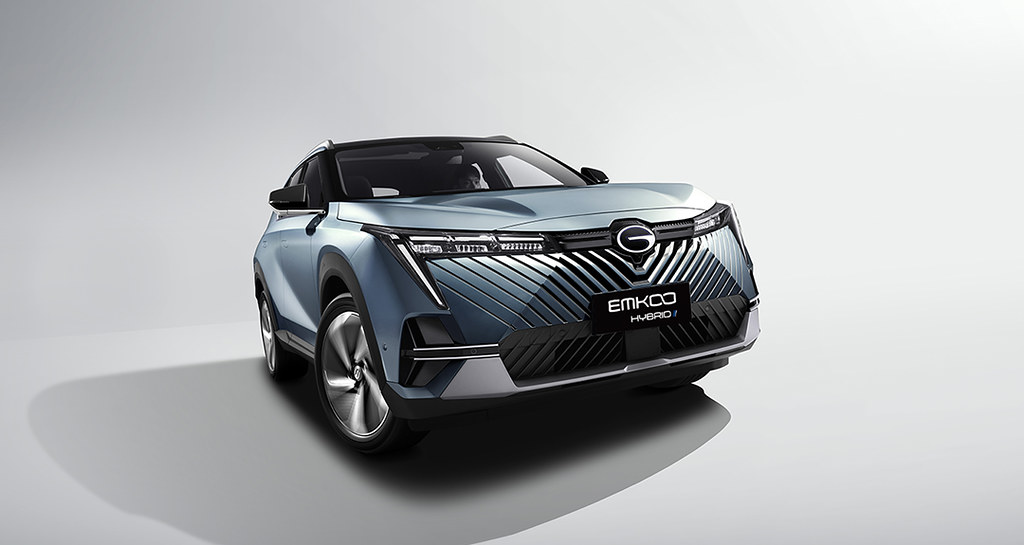The all-new fourth-generation Hyundai Santa Fe is moving upmarket. One look at the sleek, cutting-edge styling of the upsized body, one touch of the plush cabin surfaces, or one glance at the new sticker price, and you’ll see that the Santa Fe has moved up to the big leagues—at least as far as premium midsize SUVs are concerned.
Especially when viewed from the front, the new Santa Fe looks like it will be at home wearing the emblems of Hyundai’s Genesis luxury car brand. It has an almost concept car-like façade, what with impossibly slim LED lamps up front (which turn out to be daytime running lights)—the main headlamps (which swivels its beams when cornering) are clustered with the signal lights and are mounted on the bumper.
The lighting units bracket a completely new three-dimensional grille design that’s not just substantially wider, but a radical departure from Hyundai’s traditional hexagonal design. The new one has a novel large chain-link design that looks both original and upscale. A prominent silver bar that runs across the front of the car above the grille and below the DRLs add visual width to the front.
The side view retains more familial visual ties with previous Santa Fe models, but with sharper and more distinctive character lines. The stalk-mounted side mirrors look like they came from a Porsche while the doglegged D-pillar exudes a strong Bavarian appeal. There is subtle curvature from the concave surfaces on the lower parts of the doors, which work well with the big 19-inch alloy wheels to give the Santa Fe a very athletic tautness and definition.
The rear view is equally well-designed. There are sharp horizontal lines as well as Hyundai’s trademark mix of concave and convex surfaces. The taillight clusters have a very organic shape, although function seems to follow form with the signal lamps mounted low on the bumper. It’s hard to see when you’re following the new Santa Fe closely.
Any angle you look at the new Santa Fe, you know it’s an expensive automobile. That upmarket feel is mirrored in the leather-swathed seven-seat interior, with lots of space (even for the third-row passengers), high build quality, and first-rate soft-touch materials, even if there is still a fair amount of plastic on the door panels.
High-tech toys include a head-up display (HUD), a superb-sounding audio system with Bluetooth connectivity and voice recognition for Apple CarPlay and Android Auto, and cruise control.
The new Santa Fe retains its powerful yet fuel-efficient 2.2-liter CRDi engine that delivers 200ps at 3800rpm and 45kg-m of torque from 1740 to 2750rpm.
Its class-leading eight-speed automatic and monocoque structure delivered quicker, crisper shifts with far better controlled body roll during our drive around the sinuous roads of Subic and Bataan. The stiff chassis and well sorted suspension made short work of bumps and potholes.
There are no paddle shifters but you won’t need them with the generous torque. The engine is impressively smooth and muted in relaxed driving, and can only be heard when you’re going fast or overtaking other vehicles. It doesn’t have a sporty note—it’s hard to pull that off with diesel engines—but it’s reasonably refined.
Although it has barely been a year since it was globally unveiled in Geneva, the new Santa Fe has already entered the Philippine market and is now available in Hyundai dealerships nationwide.
The price of P2,338,000 might seem a big jump from its predecessor’s sub-P2 million price point, but the new Santa Fe does boast a bigger, stiffer, body, more high-end comfort, convenience, and safety features, and a bigger, more refined and more spacious interior. If anything, the higher price might just elevate its desirability and exclusivity. You don’t always get what you pay for, but in the Santa Fe’s case, Hyundai delivers a very compelling argument.

















